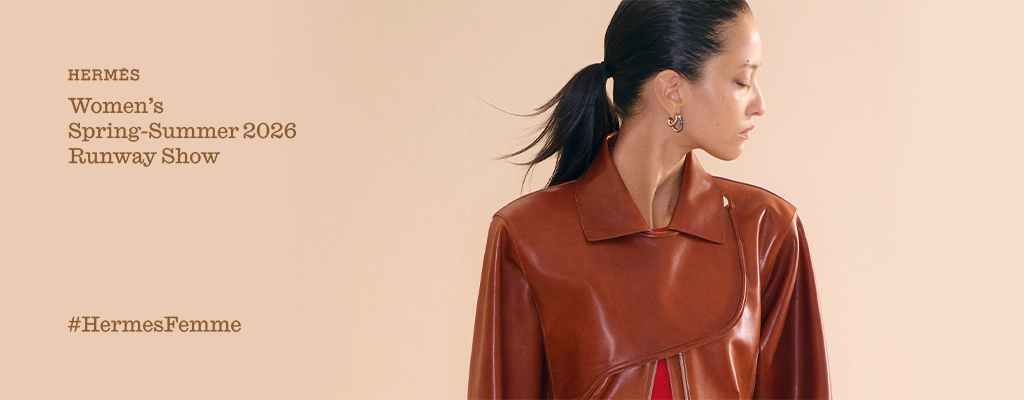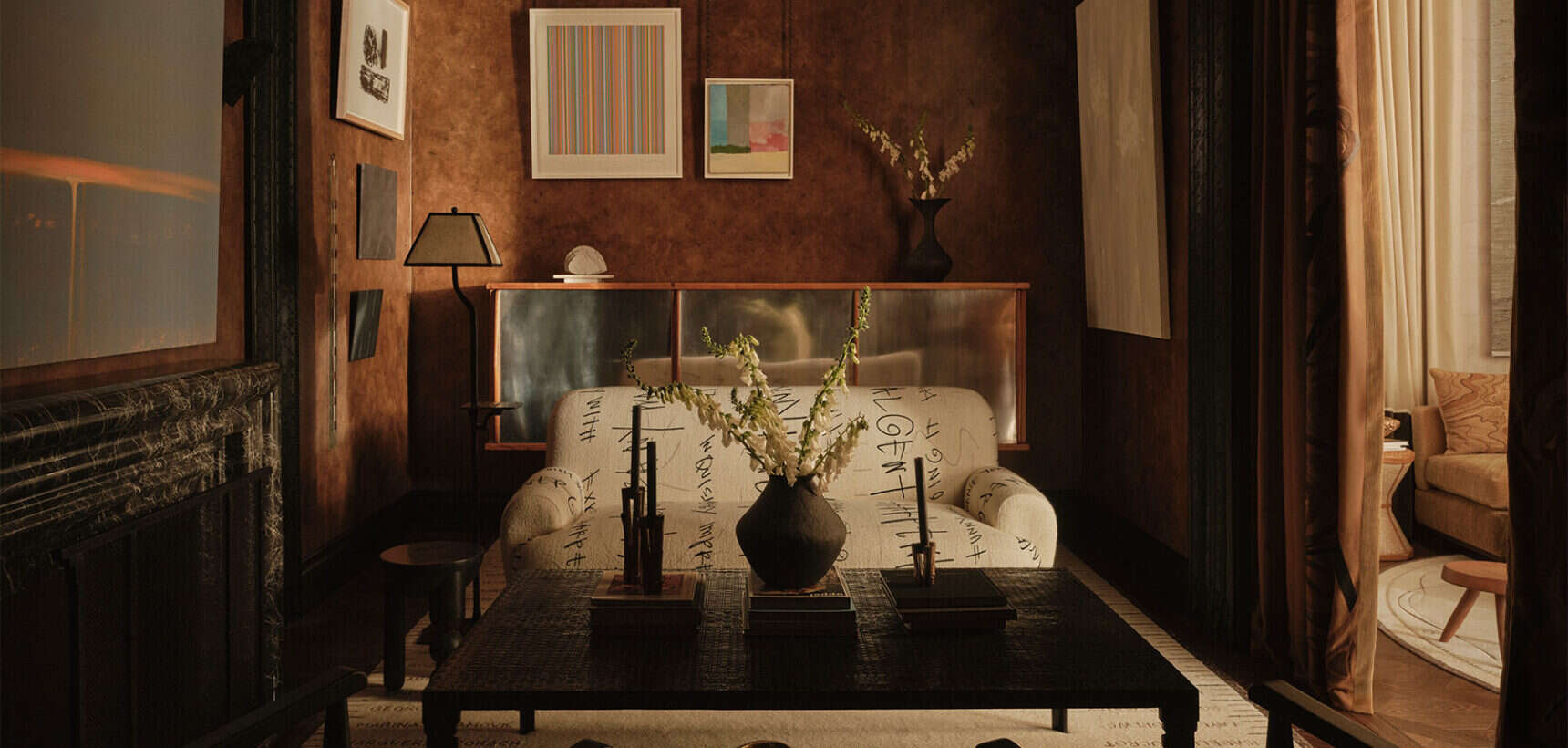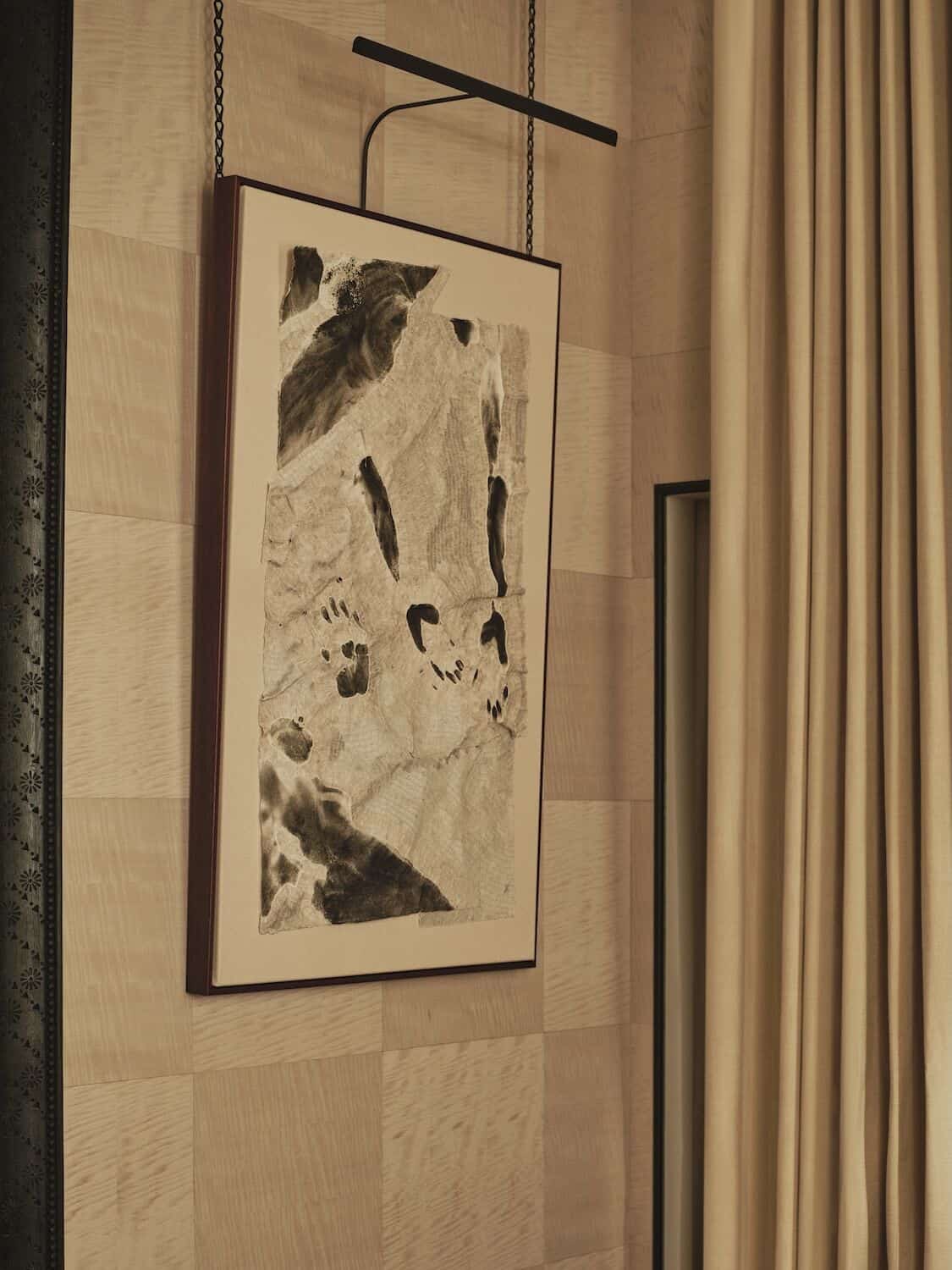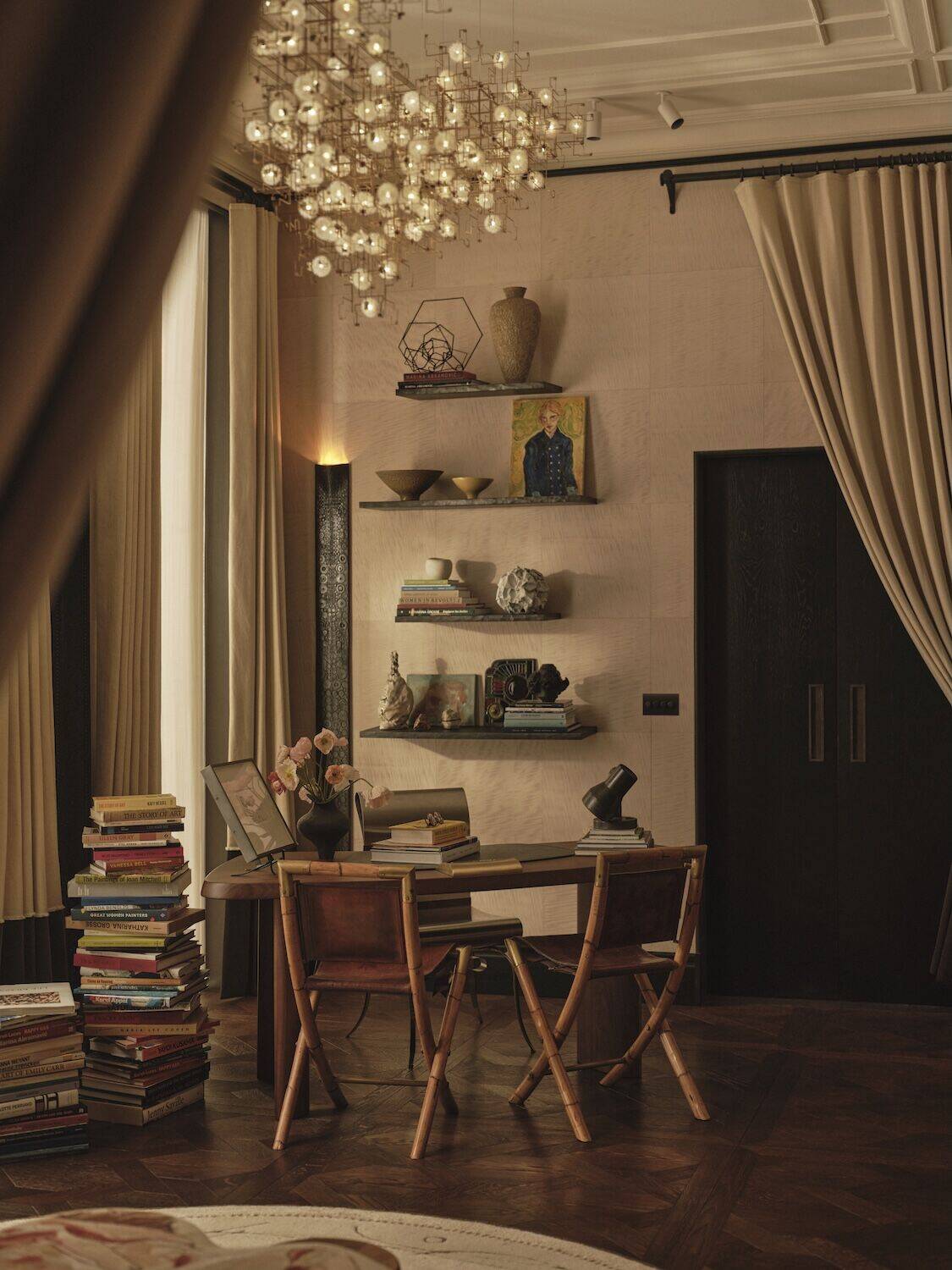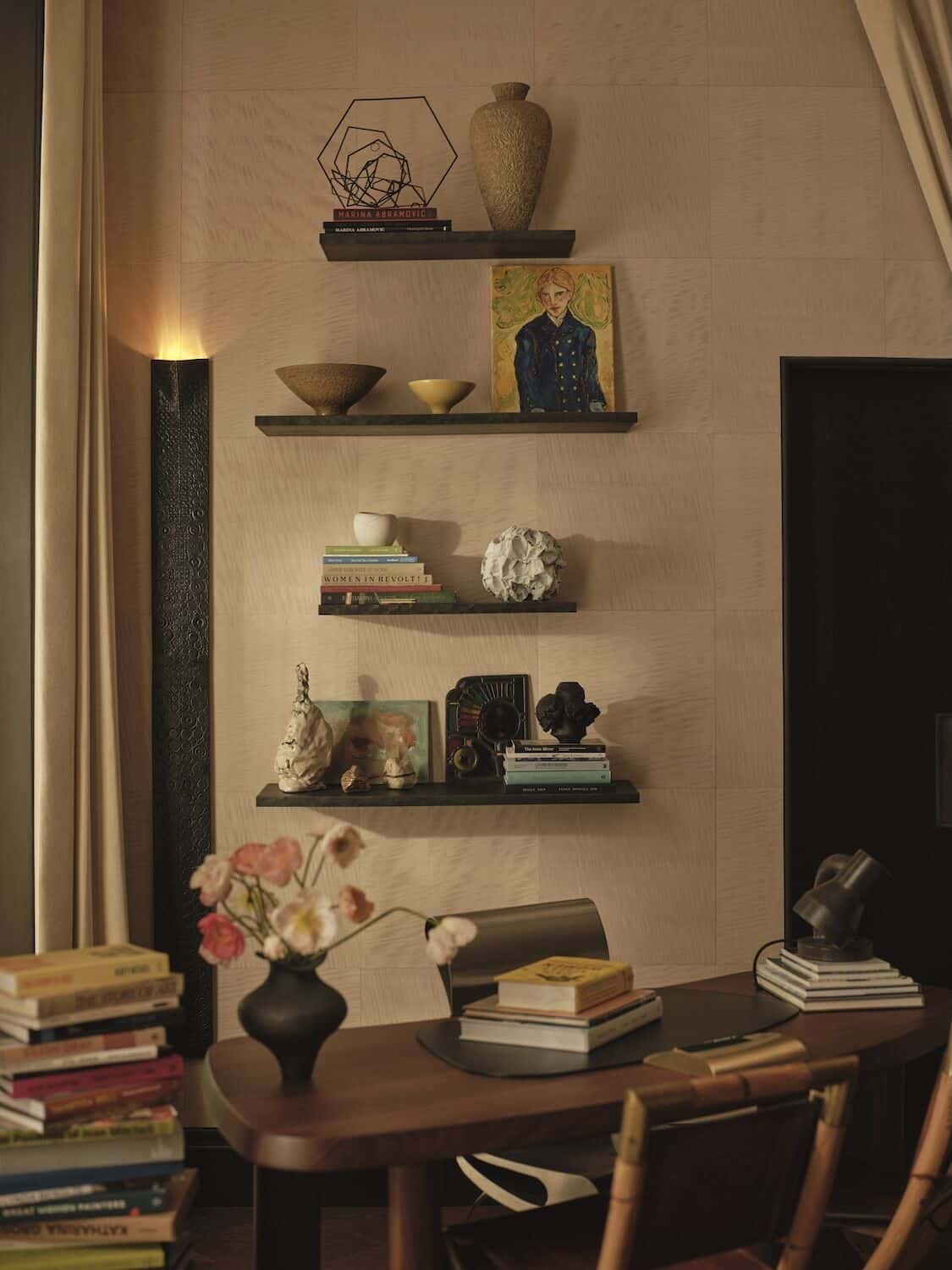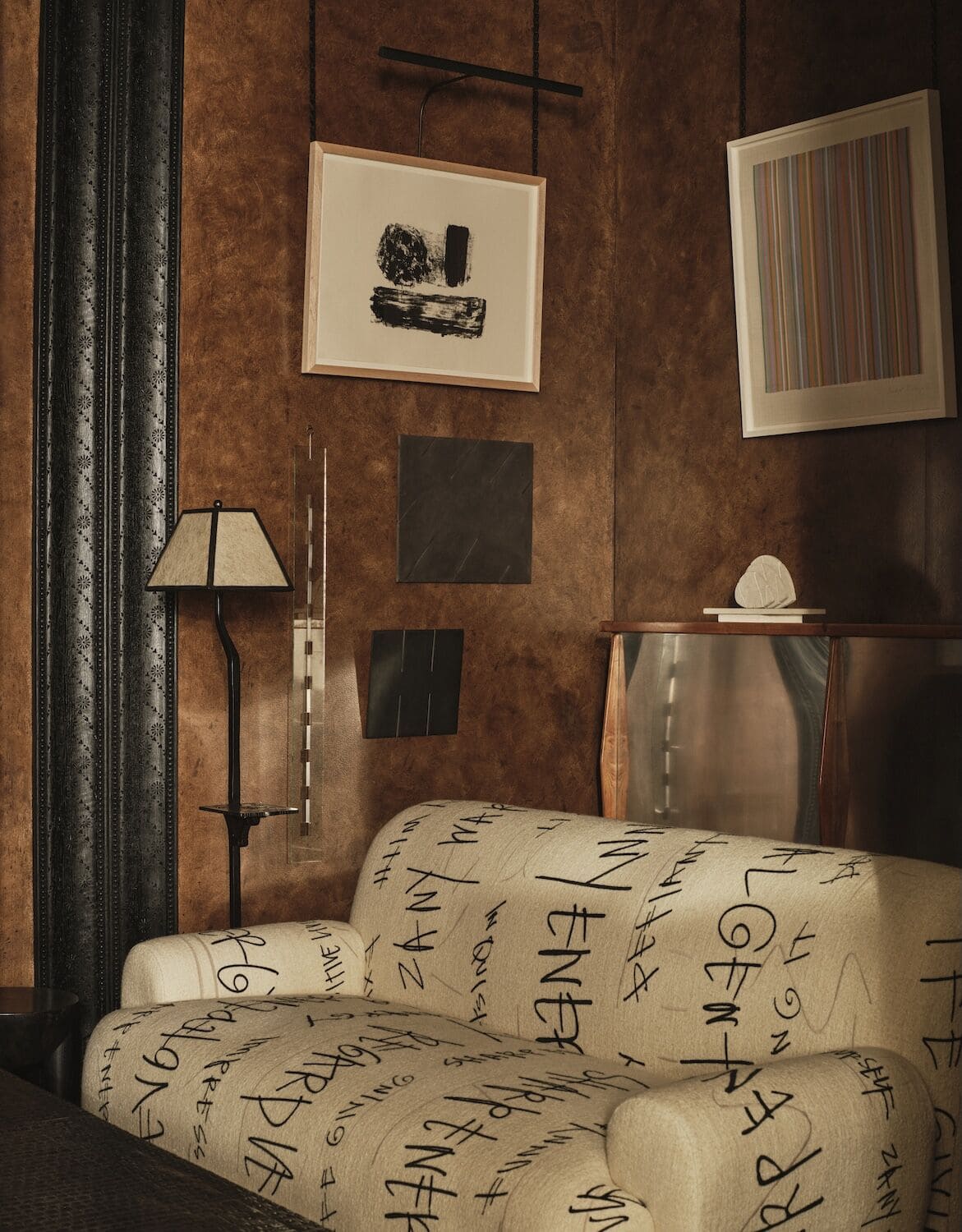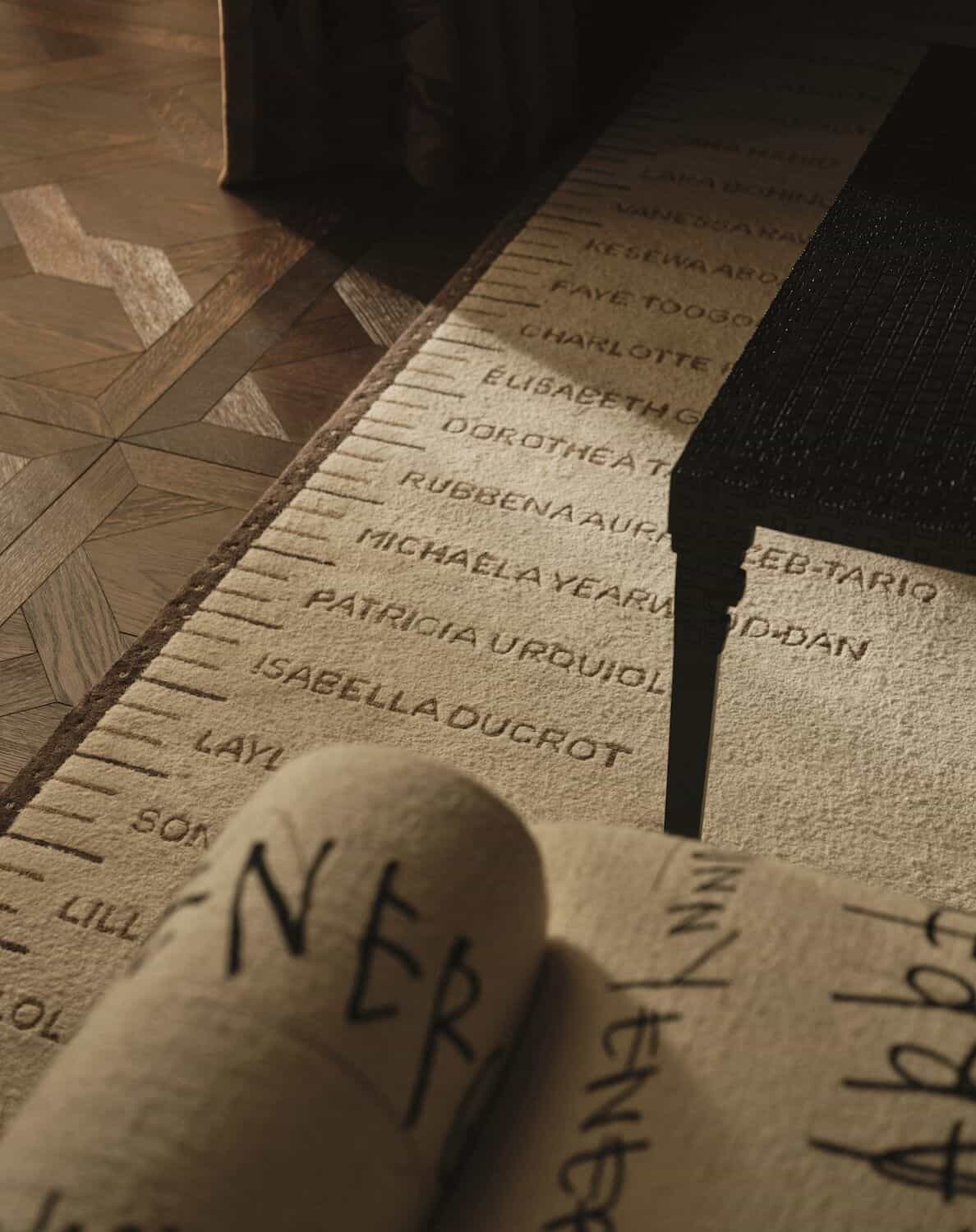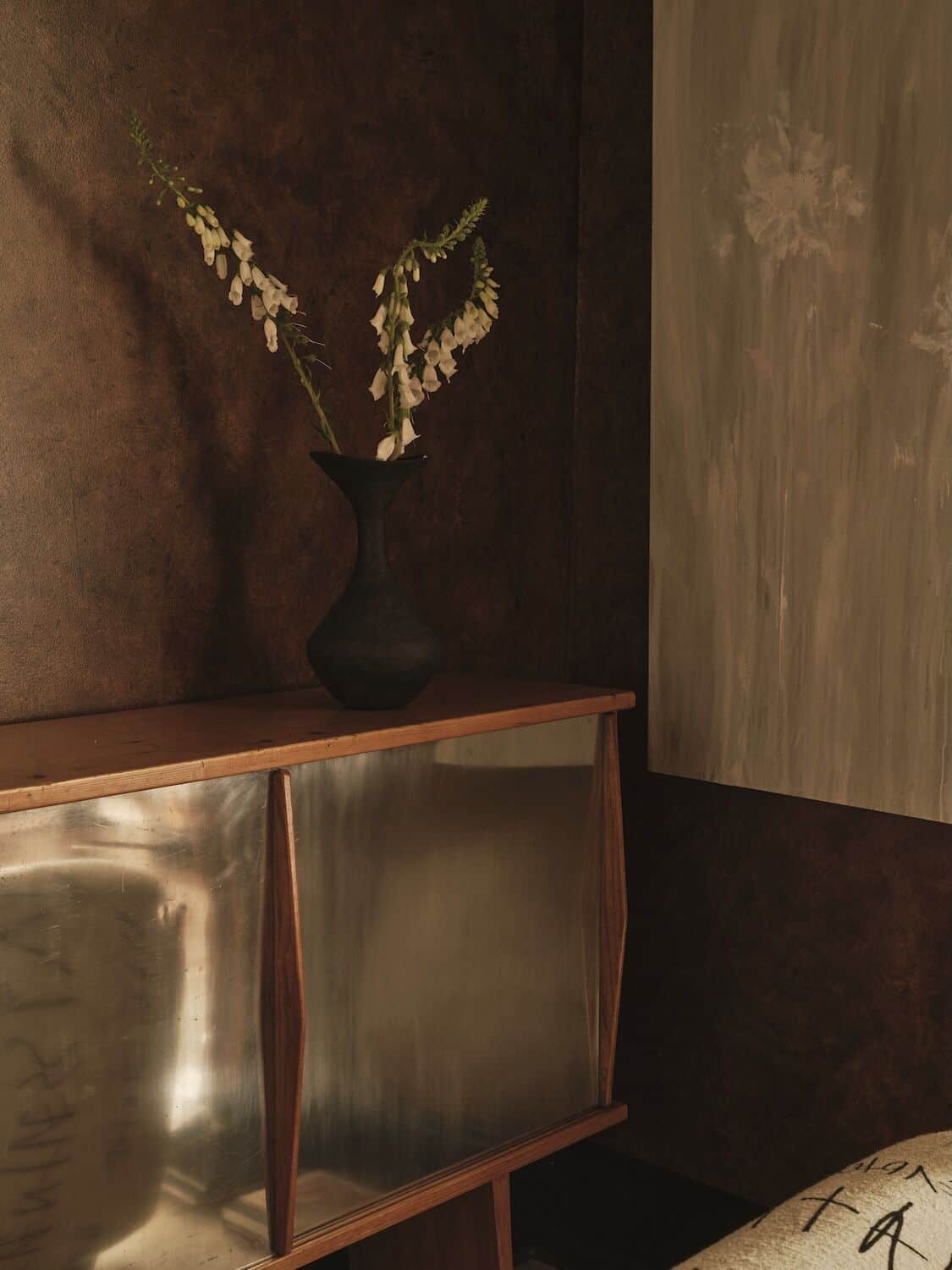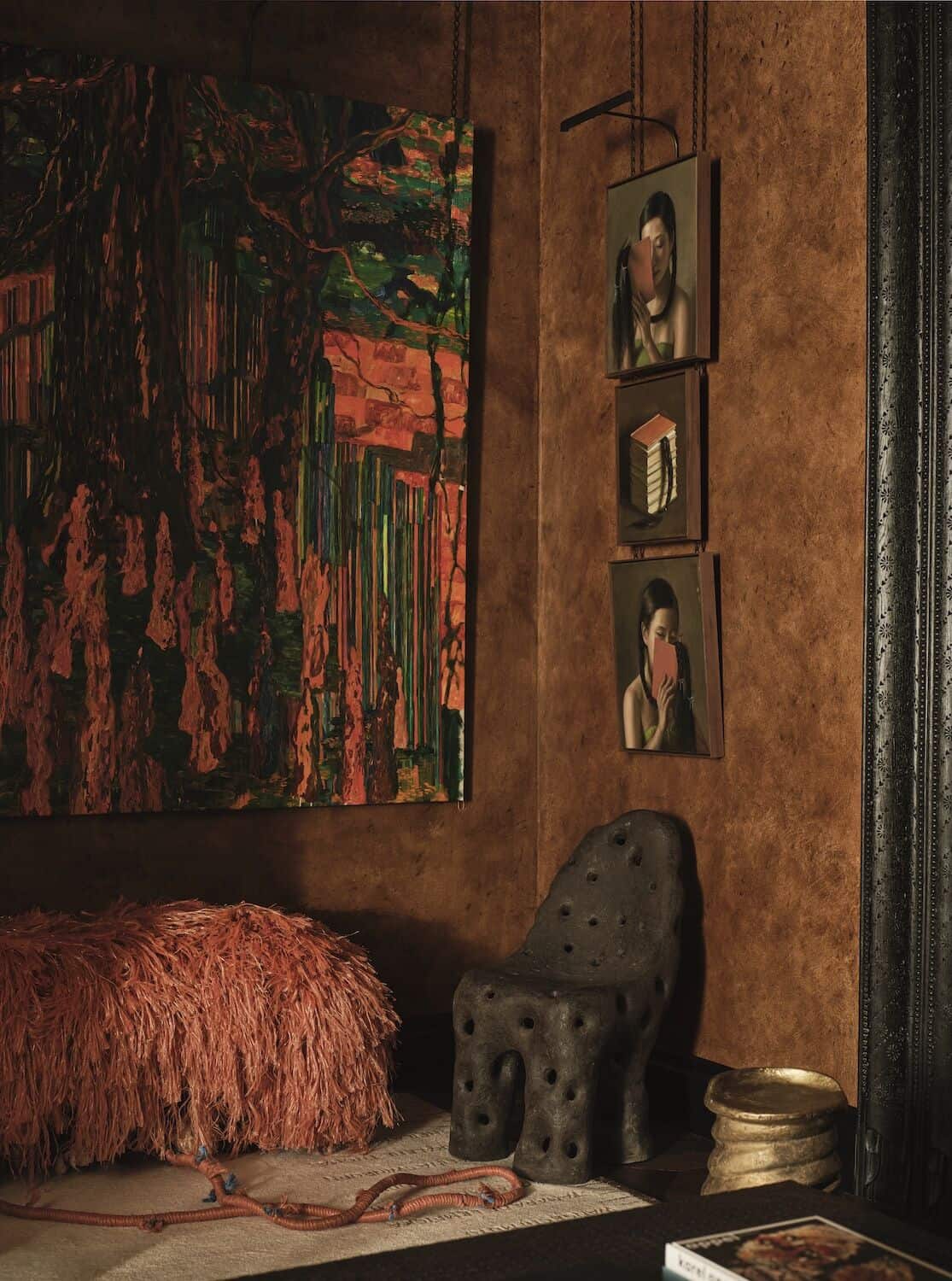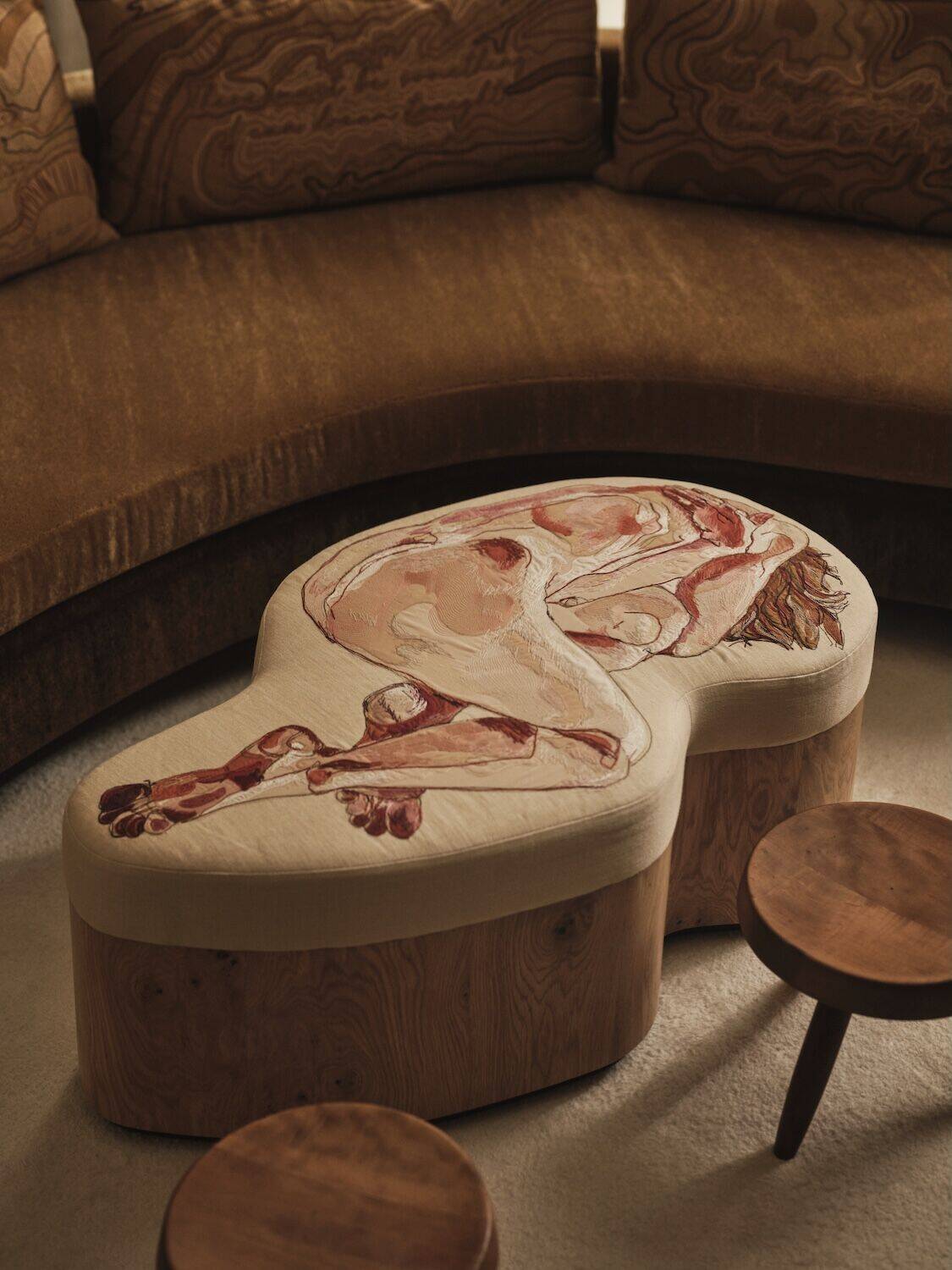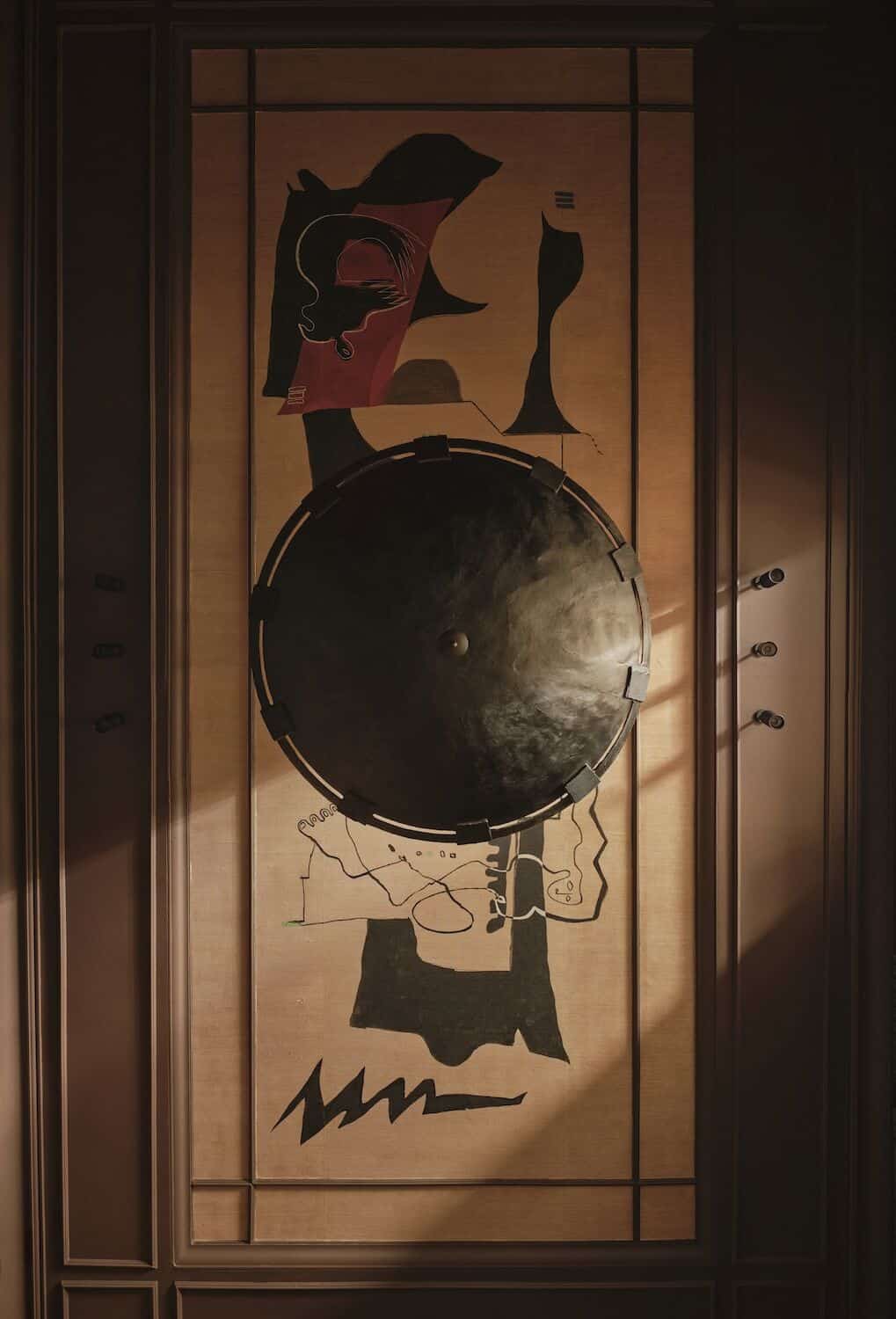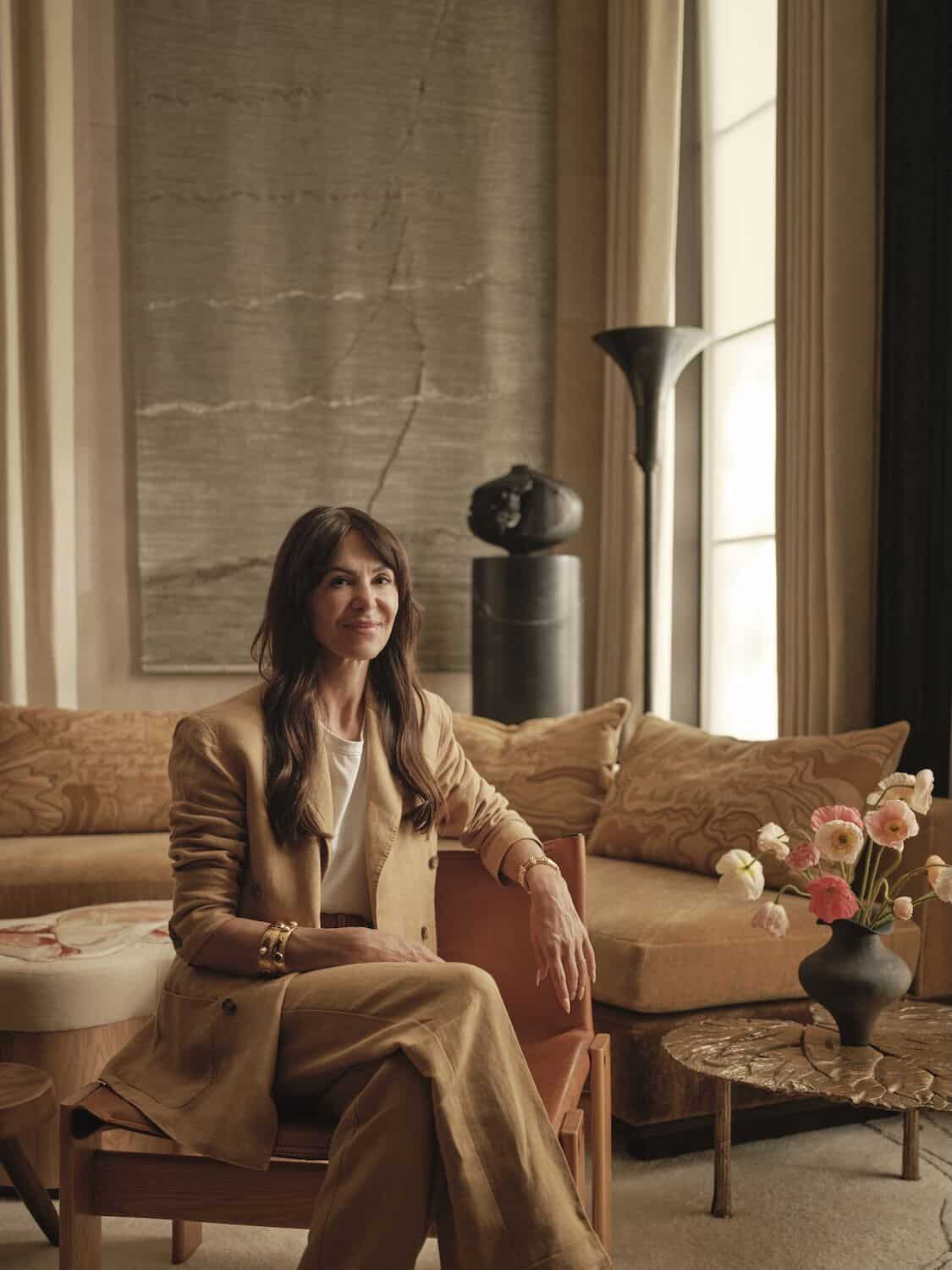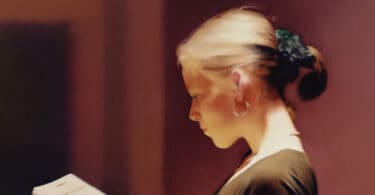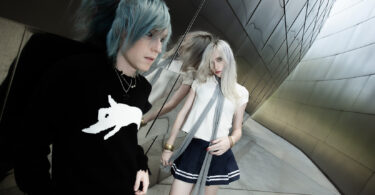In the expansive atrium of the Design Centre, Chelsea Harbour, where design’s future is constantly being reimagined, Brigitta Spinocchia Freund has carved out a reverent, radical sanctuary. Her contribution to WOW!house 2025, The Curator’s Room, is a feminist manifesto mapped in mohair, cast in bronze, embroidered in gold thread and whispered between brushstrokes.
Unveiled on June 3 and open to the public through July 3, The Curator’s Room is a love letter to women artists and designers – both celebrated and overlooked. It’s a space where the names forgotten by art history books are etched into the fibres of bespoke rugs, and where emerging talents like Sarabande prodigy Darcey Fleming sit comfortably beside mid-century legends like Charlotte Perriand and Gabriella Crespi. The room pulses with a layered, soulful energy – both sanctuary and studio, both museum and manifesto.
Spinocchia Freund, the multi-hyphenate visionary behind the namesake London-based interior architecture studio, didn’t merely curate a space, she staged a conversation. “It all began with Ninth Street Women and The Story of Art Without Men,” she tells me, referencing Mary Gabriel and Katy Hessel’s seminal texts which shine a light on the systemic exclusion of women from art history and the legacies of female artists who shaped entire movements but were long overshadowed by their male counterparts. Spinocchia Freund took this as a personal challenge: could she design a space where every object – every brushstroke, every thread – was touched by the hands of women?
The answer is a resounding yes. With the collector’s instinct of a seasoned connoisseur and the heart of a cultural agitator, Spinocchia Freund has created a two-part immersive world. The Studio, bathed in light, is a contemplative space of books, sketches and elegant solitude. The Sanctuary, moody and cocooning, invites quiet conversation beside a sculptural fireplace designed by EDM. The room is framed by decorative columns from Féau Boiseries – originally created in 1920 for Jeanne Lanvin by Art Deco master Armand-Albert Rateau – lending a poetic continuity to the legacy of women’s private creative spaces.
But make no mistake: this is no static shrine. It’s alive with collaboration. “Everything here is a collective effort,” Spinocchia Freund explains. Her passion for discovery is palpable. “It’s because I’m a complete junkie in terms of finding things… you feel things, and that’s how you know [it’s right],” she says. “You get a vibe, you understand whether you really like someone, and then you fall in love with them because you understand their story.”
Take, for example, The Drop (2024), a haunting painting by Luella Bartley reimagined through embroidery by the legendary atelier Hand & Lock. The figure – a woman lying on an ottoman – becomes a metaphor for vulnerability and visibility, her form stitched into permanence. For Spinocchia Freund, the collaboration was as much about memory as it was about craft. “Luella used to be this really incredible designer in the early 2000s, and she’s now an artist,” she says. “She was always a brilliant illustrator – her prints were always hers, her ideas – but now she’s focusing entirely on painting.” In The Drop, Bartley’s emotional force is laid bare. “There’s a real strength and anger in her work now, it’s like she’s channeling a lot of emotion onto the canvas.” That intensity, she explains, is precisely why she brought Bartley into the room. “I wanted to show her because people forget how influential she was in fashion. Now she’s doing this – and it’s just as powerful.”
Bartley says, “Collaborating with Spinocchia Freund and Hand & Lock on my painting The Drop for The Curator’s Room has brought a fascinating new texture to the original artwork. The delicate, scratchy embroidery work adds to the fragility of the piece. The fact that she is lying exposed on an ottoman – to be sat on, to have feet placed on – is really interesting, and she looks so vulnerable lying there. It’s been a wonderful experience to see it reimagined and to witness the layers added by the other creators.”
The Spinocchia Freund x Luella ottoman
Roksanda Ilinčić’s hand-painted ceiling draws directly from her AW24 collection, itself an ode to Le Corbusier’s murals and his “beloved retreat by the sea – a humble cabana that whispered of solitude and inspiration”. “[It was] an inspiring convergence of disciplines,” the designer says, “that allowed me to weave elements of my womenswear collection with the language of architecture that has long shaped my perspective.”
For Spinocchia Freund, Ilinčić’s transformation from garment to sculpture is emblematic of the space’s spirit. “Roksanda’s piece was a complete surprise. It’s not fashion at all – it’s sculpture,” she explains. “She created this kind of folded form – like fabric, but in solid material. It feels like a frozen garment.” The ceiling – its painterly undulations frozen in motion – feels like couture cast in stone. “It’s so interesting to see how someone known for colour and movement in clothing translates that into stillness and structure.” She adds, “I love when fashion designers explore other mediums. It brings a whole new language to what they do.”
And then there’s the Tribute rug, custom designed with Stark and art patron Catherine Hunt, which literally weaves 87 names of women artists – past and present – into the room’s foundation. A piece of art in itself, it grounds the space in history and intention.
Around the room, signature pieces spark dialogue: Perriand’s three-door Slideboard. Coquettish ribbon chairs by Maria Pergay. Drift Studio’s awe-inspiring dandelion chandelier. Ingrid Donat’s textural coffee table. Line Vautrin’s poetic mirrors. The curtain? Inspired by Lee Krasner (who was heavily featured in Ninth Street Women), hand-woven by an unrepresented weaver championed by Quest. And one unforgettable Studio Sofa, reimagined from Spinocchia Freund’s private collection, layered with collaborations by Louise Gray, Quest embroiderers and emerging makers.
A reclaiming of space, Spinocchia Freund has gone out of her way to platform underrepresented women from trailblazing foundations like Cockpit Arts, Quest and Sarabande. Nigerian artist Studio Lani appears with cane and leather work discovered at London Craft Week. Tracey Emin protégé Jolene presents Girl in Green Coat, a melancholic portrait that Spinocchia Freund was so moved by, she acquired it herself. “There’s so much talent that’s untapped,” she says. “And not just ‘young’ talent – people at all stages of life, finally finding their voice. It’s about spotlighting them.”
Roksanda ceiling mural
And sometimes, the most powerful stories come from quiet moments. One of the room’s most emotional pieces, a phantasmic painting depicting two wispy, white roses, was created by artist Bianca Raffaella. “We had her here talking about this piece yesterday, and we were all in tears because she’s visually impaired and this particular piece represents her eyesight. So she had this rose, and as the petals of the rose were falling down, it was a representation of how her eyesight is reducing over time,” Spinocchia Freund says. The artwork – delicate and devastating – now hangs as a quiet centrepiece.
That spirit flows through The Curator’s Room like a current – each object a node in a greater narrative. It’s a space where we’re invited not just to look, but to feel. There’s humour, strength and fragility woven through ceramics, upholstery and painted plaster.
Even the logistics carry emotional resonance: the entire room came together in just four weeks. “If we had more time, I would’ve included more fashion designers,” Spinocchia Freund says. “But what we achieved in a month is extraordinary – and that’s down to the women I worked with.”
As you walk through The Curator’s Room, what you feel most is presence. The presence of stories long buried. The presence of process, of hands and minds shaping every surface. The presence of voices – each distinct, none dominating.
WOW!house is known for its glamour and its grandeur, but Spinocchia Freund brings something deeper. Her room is an archive of intention, a manifesto in the form of really great interior design, a space that speaks – if you listen.
The Curator’s Room at WOW!house 2025 is open at Design Centre, Chelsea Harbour, from now until July 3.
Photography by Felix Speller.
Brigitta Spinocchia Freund



